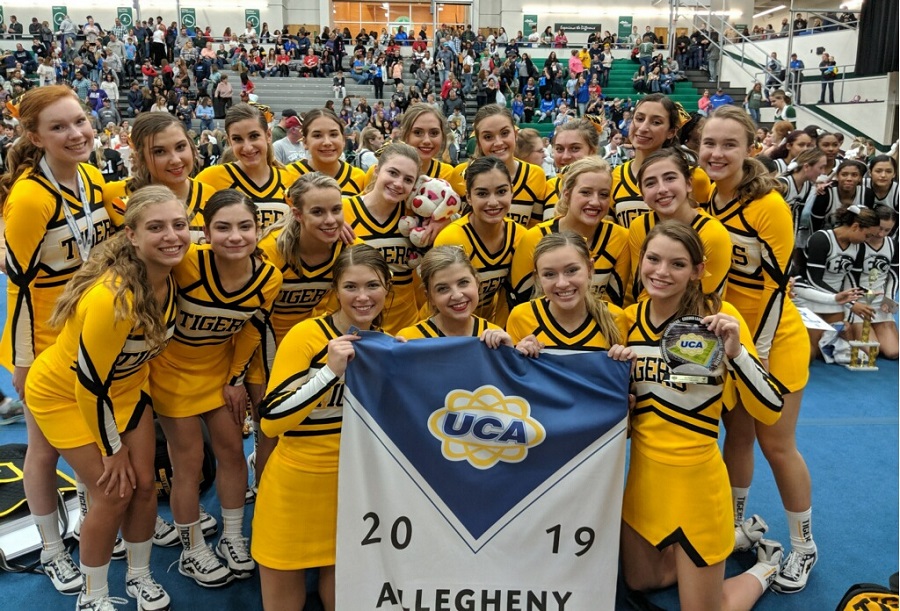Cheering Qualifies
Despite competing in various tournaments, there remain mixed responses on whether or not cheerleading can be considered a sport. Here’s why it should be.
photo courtesy of NA Sports Network
As cheering has begun to require greater commitment and athletic ability, it deserves to receive status as a sport.
March 3, 2020
“They’re not even doing anything,” scoffs a fellow student of mine, in regard to the cheerleaders on the sidelines. I have heard this phrase countless times at Friday night football games.
I can see where those beliefs come from, especially when the team is doing cheers that don’t involve stunts. However, it is not fair to disregard the hard work put into and the talent required in cheerleading. In recent times, it has been debated whether cheerleading can be considered a sport. I believe that most school cheer teams and definitely competitive cheer teams should be.
For starters, cheer teams who compete should, without a doubt, be considered athletes. The aspect of competing against other teams and being judged upon athletic performance is almost the entirety of what defines a sport.
According to the Oxford Dictionary, a sport is defined as “an activity involving physical exertion and skill in which an individual or team competes against another or others for entertainment.” Competitive cheering fits this definition perfectly.
By insinuating that cheer is not a sport, critics disregard all the work and time that are put into routines. There are several aspects of gymnastics throughout a cheering performance, such as flips and displays of strength.
I am certain that those who demand that cheerleading remain an activity and not a sport are unable to do half of the stunts and talents that cheerleaders can. This, to me, seems like hypocrisy. People with no knowledge of cheerleading are hardly qualified to judge whether or not it is a sport.
I can see where those who deny its sport status are coming from, up to a certain point. Some cheer teams remain on the sidelines and stick to dance-like routines and cheers, so it’s understandable why some would hesitate to call it a sport.
However, for those teams that compete and put hours of practice into perfecting stunts each week, they deserve to be recognized for that level of dedication.
Additionally, high athletic ability is required to perform the actions that many cheerleading teams have perfected. Strength is required for all of the team; for example, bases must be able to hold up other cheerleaders, and flyers must be able to balance, all requiring practice and training, as all other sports do.
I feel that for an activity to qualify as a sport, it needs to include rigorous physical activity, competing, and rules and guidelines set. Cheerleading has all of these, requiring teams to put hours of practice, sacrifices, and commitment into routines and competitions.
There are differing sets of guidelines that apply to cheerleading, giving it the structure of any other sport. For example, certain stunts are not allowed to be completed on the sidelines, if the track is hard or tumbling mats are missing.
It almost seems as if part of the stigma regarding cheerleading and its sport status stems from sexism, as traditionally, cheerleaders were primarily women. I’m not saying that sexism is the sole reason that some question the status of cheer, but I do believe it contributes to the belief.
As time goes on, competitive cheerleaders, and even teams who don’t compete, gain increasing amounts of recognition and respect. Despite the improvement, there is still more to gain.













